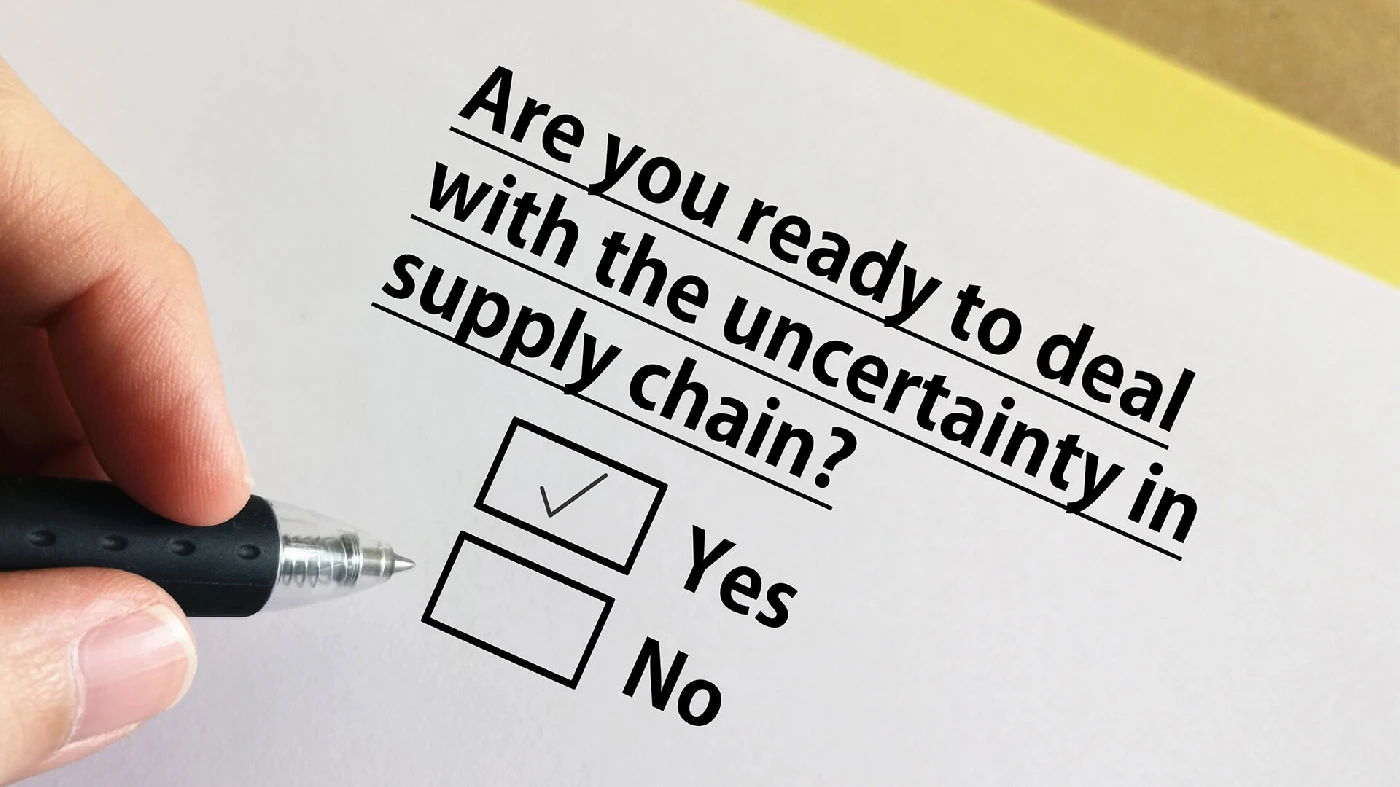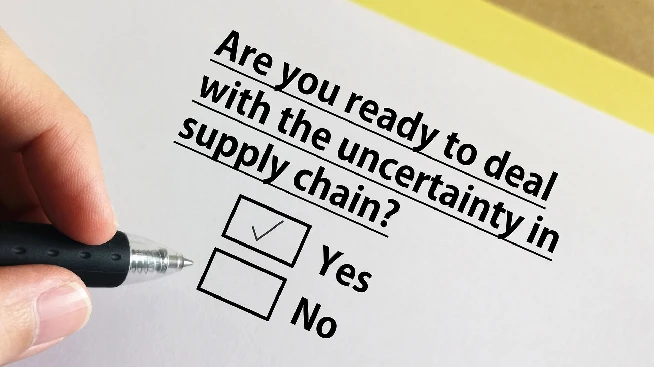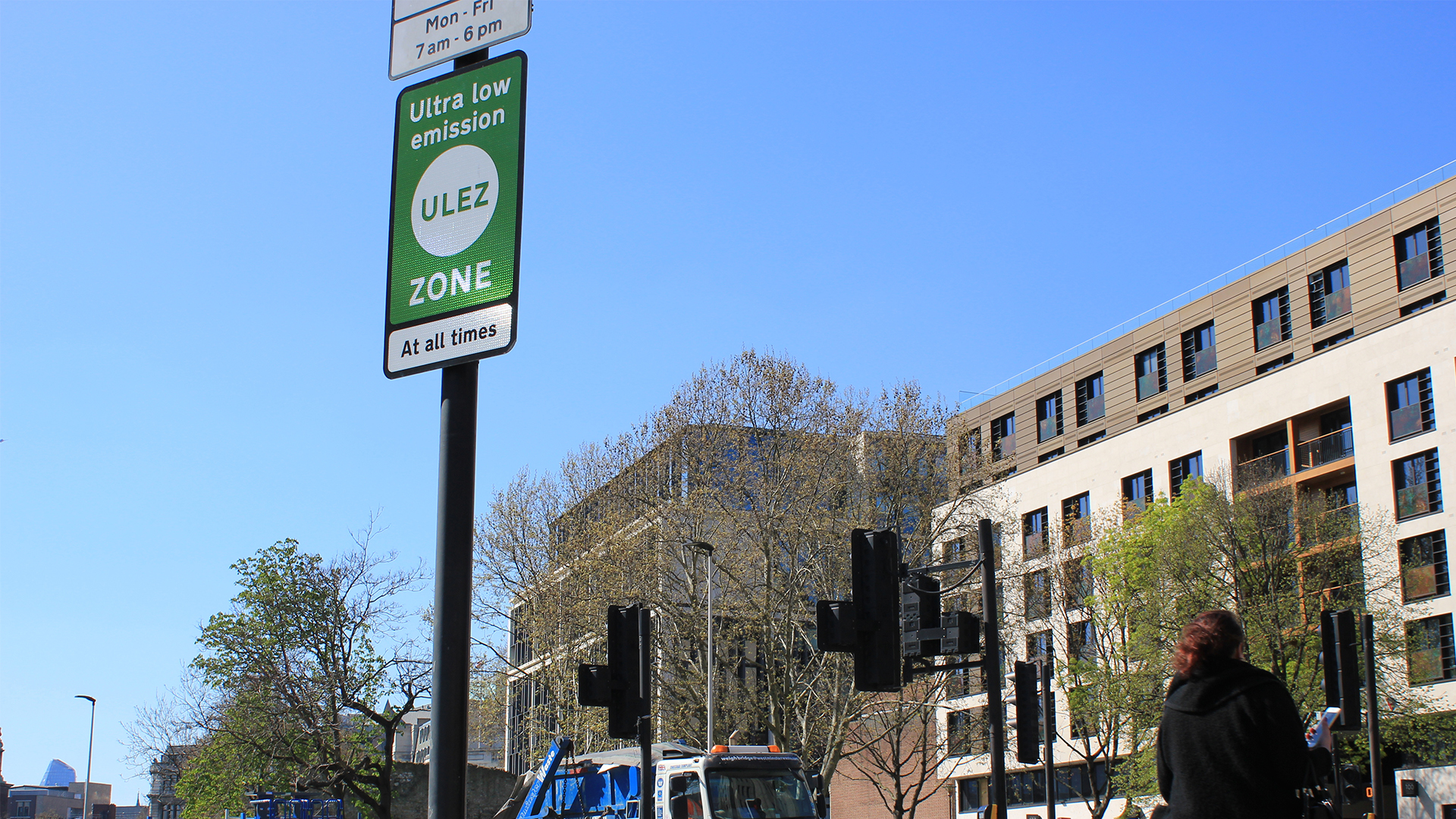The Christmas peak may have been a big mountain to climb, but retailers are increasingly aware that many of the challenges faced will continue well into the future. The sector must plan now for even higher levels of agility going forward.
Louisa Hosegood, Digital and Strategy Director at Bis Henderson Consulting, draws on the team’s experience to set out a five-point strategy for supply chain leaders.
” Whilst setting out an overall direction, our plan for change will allow us to flex and remain agile.” Head of Logistics, Fortnum and Mason.
New challenges and constantly evolving operating models are nothing new for supply chains – they are expected to be everything to everyone – resilient, fast, cost-effective, convenient, sustainable, responsible, responsive. The current combination of interlinked threats, from Covid and Brexit, to carbon dioxide availability, energy pricing, global shipping turmoil, driver and other labour shortages, to name just a few – may be unprecedented, but they are not unrepeatable. Many have been building for years, and they overlay more fundamental changes in consumer behaviours and expectations.
Even before Covid businesses were under constant pressure to balance the competing demands and changes from customers, suppliers, the external economic and political world, investors, stakeholders and staff.
Some of these, such as the impact of Covid, were truly unpredictable. Others have been in plain sight – Brexit has been a ‘thing’ for five years, driver shortages building predictably for a decade. Ecommerce growth and high street shop closures are not new, shorter product lifecycles and material sourcing changes have not appeared overnight, rising customer expectations and increasing regulations have been pain-points for a long while.
Faced with ever more diverse consumer preferences (vegan, organic, local, zero plastic etc.) often driven by social media, the old, largely stable, model of mass production mediated through mass marketing no longer works.
The ‘nuts and bolts’ of our supply chains have never been more efficient, but the task they are asked to achieve is changing beyond recognition.
The global toilet roll shortages of the early pandemic, for example, were more about changes in patterns of consumer demand – in this case panic buying – rather than serious supply chain failings. In his recent book, ‘The New (AB)normal: Reshaping Business and Supply Chain Strategy Beyond Covid-19,’ Yossi Sheffi, Director of the MIT Center for Transportation and Logistics, makes the case that The Covid pandemic didn’t actually break the global supply chain, it simply revealed underlying cracks and accelerated shifts that were already well underway.
You could argue that the bright spotlight of Covid has acted simply as a catalyst – it has accelerated the need for change, and the case for a new approach to the future of supply chain.
And what is that future supply chain aiming to deliver? According to the Gartner 2020 Future of Supply Chain survey, 97% of leaders said their digital supply chain strategy was striving to improve customer experience, whilst at the same time 98% said the aim is also to reduce costs. What does this new approach to balancing resilience and cost need to look like?
The slick answer has for a long time been ‘agile’. But agility has many dimensions, and there are no silver bullets. Agile responses to current and future challenges can’t be achieved by throwing in resources, of inventory or labour. Agility isn’t a destination, it’s a way of life. It’s a way of operating and it’s a mindset. But what does it mean to be agile in reality?
At Bis Henderson we support a breadth of clients, large and small, across a variety of industries including retail, FMCG and manufacturing, with a multitude of different challenges and transformation programmes. Here we share our experiences and insight to suggest five practical steps for supply chain leaders to consider…
No.1 Customer Agility
The first priority of an agile supply chain is knowing and understanding your customer. Not just their current purchasing preferences, but the directions these are likely to evolve in, the factors that turn a preference into a purchase, and what actual or possible competitors are doing to respond.
Early alerts can keep you ahead of the game. How good are your tools for customer monitoring, feedback and research, and are you using the data and insight you receive?
Some tough decisions need to be made – no business can succeed by trying to satisfy every need. Agile responses have costs, but which responses generate real sustainable profit? The ability to ‘steer’ customers towards preferred, more profitable, options through mass advertising is rapidly diminishing.
Even price competition is not what it was, as in the eCommerce age consumers increasingly choose on the basis of service and delivery – options that are often free to the customer. Importantly, ‘Agility’ includes being nimble enough to avoid being trapped in a high-cost low-return situation.
No.2 Direction Agility
An agile strategy needs to allow a considerable degree of flexibility within broad parameters. The direction of travel is not towards a fixed end-point – no one can say “we will have achieved agility in 18 month’s time” and you can’t download agility as an App.
It is a journey of continuous improvement and refinement. It is about building flexible platforms – physical assets, technology, processes, people and competencies – that will allow a variety of responses as appropriate. But also, it’s about stripping out responses that while agile don’t actually add much value – so, keeping it lean.
Agility is a property of the total, end-to-end, supply chain – agility merely within the four walls of the factory or the store won’t deliver.
Which parts of the supply chain’s agile response can you directly control? Which parts can you influence? Where, on the other hand, are you at the mercy of external partners or circumstances, and how can you remedy that? Warehousing, logistics and fulfilment is only one component of an agile response, but an important one, and one where you can make most of the calls.
Working with the iconic brand Fortnum & Mason recently, experts at Bis Henderson created a strategic direction for ambitious growth based on stepping stones and a decision roadmap based on certain trigger points:
“This approach will allow us to support business growth and prioritise our exceptional customer service, at a pace of change that does not bring undue business risk amidst an uncertain post Covid retail trading landscape. Whilst setting out an overall direction, our plan for change will allow us to flex and remain agile.” Head of Logistics, Fortnum and Mason.
No.3 Solutions Agility
Agile solutions should consider functionality carefully, both in addressing current issues, and also in the ability to cope with the widest range of possible future developments in line with the company’s strategy. This means thinking in terms of broad capabilities rather than specific requirements. It also requires a fresh assessment of what success would look like – redefining KPIs that are relevant to an agile world. It means abandoning some long-held but outmoded ideas, and indeed assets, which may need to be reconfigured, repurposed, or even disposed of, regardless of whether they have yet been written down.
Agile does not necessarily mean highly automated, but rather a mix of manual, mechanised and automated, depending on what is best for discrete parts of the operations. Modular solutions are faster to deploy, increasingly at lower price-points, easier to align with growth or change, simpler to adapt and develop and some are highly portable. Investment and implementation risk is lower, keeping both finance and operations happy.
Financing assets ‘as a service’ is well-established in the technology world, where outgoings are related to activity and charged to revenue rather than capital – and often with other advantages in support, upgrades and the like.
A similar capital-light and agile philosophy can and is starting to be applied to warehousing, where beyond a baseline capacity, requirements need to flex – in terms of volume, geography and processes – as the marketplace changes. The ‘sunk capital’ in warehousing or other physical assets need no longer act as a drag on future innovation and change.
The Bis Henderson Space team is constantly up against the challenges of a highly dynamic retail sector demand to find highly flexible warehouse space…
“It’s a tough place out there. Sawtooth patterns of supply and demand mean firms either pay for space that is under-used for much of the time, or scramble for additional capacity to accommodate peaks. And critically, new space is not coming to market in any quantity. Many businesses, often working on very fine margins, are in no position to commit to long leases, or to costly and time-consuming fit-outs.” Steven Purvis, Operations Director, Bis Henderson Space.
We have many clients where the traditional property market has not been able to help, and our Space team have leveraged their access to an extensive network of less conventional suppliers (in the user community) to match up supply and demand – and in some cases to manage this provision as a service, helping retailers to avoid long-term balance sheet commitments.
Agile responses call for creativity and initiative – new ways of operating, different uses of assets such as space, even letting historic assets go, or finding ways of developing new revenue streams from them.
It can be possible to future-proof your supply chain by reintroducing an element of redundancy, but without this implying holding ‘dead’ assets or stock – it may be about varying the use of an asset across the year, or leveraging strategic relations with suppliers to achieve new goals.
The Bis Henderson team are working with many omni-channel retailers who are reassessing the role of their physical stores to service the growing eCommerce demand, whether for BOPIS (buy online pick up in store) or BOSFS (buy online ship from store), or who are re-evaluating their range width and moving some products to supplier direct shipments. And just as Airbnb and Uber opened up the hospitality and transportation markets, emerging grocery retail platforms like Instacart and Deliveroo are offering eCommerce and same-day delivery solutions to enable or to rival the traditional players.
No.4 Technology Agility
Just as commitment to physical assets can impede moves to new ways of working, so can monolithic IT systems. The traditional multi-year practice of upgrading and replacing supply chain backbone technology is far too slow to meet urgent new challenges – it risks producing an outcome that’s obsolete as soon as it’s launched. It also will be unable to integrate innovative digital solutions quickly in response to market changes.
A recent Bain survey ranked legacy supply chain architecture as the number two obstacle for achieving companies’ digital ambitions. An adaptive approach is proving more successful. Cloud-based systems offer software as a service, core-light technology architecture – shrinking the core so it becomes single source of truth for critical data – complemented with best of breed microservices for remaining functions, and including capabilities such as real-time event management. Coupled with an agile test-and-learn approach this increases the success rate of transformation and speeds up benefits delivery.
Digital transformation is the integration of digital technology into all areas of a business, fundamentally changing how you operate and deliver value to customers. It’s also a cultural change that requires organisations to continually challenge the status quo, experiment, and get comfortable with failure. (The Enterprisers Project).
End-to-end visibility is key for agility – what’s happening where in the supply chain, to know as early as possible if there is a problem and be able to re-plan or at least communicate around it – whether that’s late supplier inbound, consumer preferences driving new demand trends, order spikes creating warehouse fulfilment delays, or transit issues in the final mile. Historically, it’s been difficult to achieve that level of visibility due to independent and disconnected systems that don’t easily share data.
However, advances in and the declining cost of key technologies such as the Internet of Things, mobile internet, robotics, cloud computing, and artificial intelligence are starting to move things forward in this area of critical change.
Artificial Intelligence (AI) now offers us the ability to organise effective agile responses around current data. Live EPOS data has been available to retailers, and their suppliers, for a long time, but the ability to combine large data sets with other relevant business intelligence, from the weather to traffic conditions, to what is tending on Twitter, identify micro-trends, and respond with agility, is very recent.
Now, big data techniques, AI, machine learning and predictive analytics are making possible an ever more nuanced agile response to customer needs in real time. Companies and supply chains cannot, of course, implement all this immediately, but the direction of travel, the road map, must be set out now.
No.5 Organisation and People Agility
These creative approaches will require new thinking by people and partners who are open to change, and innovation from the top. In an agile world there isn’t time for extensive modelling and simulation, for debating and writing procedures and protocols, for nailing every detail down.
Individuals across the company, not just supply chain and logistics managers, need to be trained and empowered to sense what is required, to use their initiative, to collaborate and communicate effectively. Collaboration even with competitors may no longer be unthinkable (thinking on competition law may be moving in this direction) but will require a new mindset.
In many instances, what may be needed are simple and decisive decision-making processes, a culture that welcomes, rather than resists change, an acceptance that sometimes decisions will be sub-optimal and their outcomes uncertain but that this is preferable to doing nothing while you wait for more data. To delay implementing the strategy for want of certainty is equivalent to not having a strategy at all.
And key to supporting this will be strategic supply chain partners for goods and services that bring a similar approach to flexibility, innovation, proactiveness, and with commercial agreements structured to be empowering and enabling. Supply chains must be empowered, not shackled, by the contract, yet even in the current crisis too many companies are hiring lawyers to argue whether the penalty clause trumps force majeure, rather than collaborating to find solutions.
For many companies and their supply chains, especially those that are used to operating in a tightly controlled, deterministic manner, introducing these approaches to agility may be challenging. But they are very necessary, and may be rewarding, for staff and customers as well as for profitability.
LOOKING AHEAD…
A 2021 Capgemini report into the Consumer Products & Retail sector finds that 66% of businesses believe their supply chain strategy will need to change significantly in the next three years to adapt to the post-Covid new normal. However, constant rapid change may be as ‘normal’ as it gets!
If any of what you’ve read above resonates, why not talk to us at Bis Henderson Consulting?
We can offer advice on your strategies and tactics for agility – we are experts across the supply chain covering strategy, network design, automation selection, warehouse and infrastructure design, transport optimisation and tender management, as well as project implementation and change management – and indeed, everything in between.
Together we can make agility a reality.





























